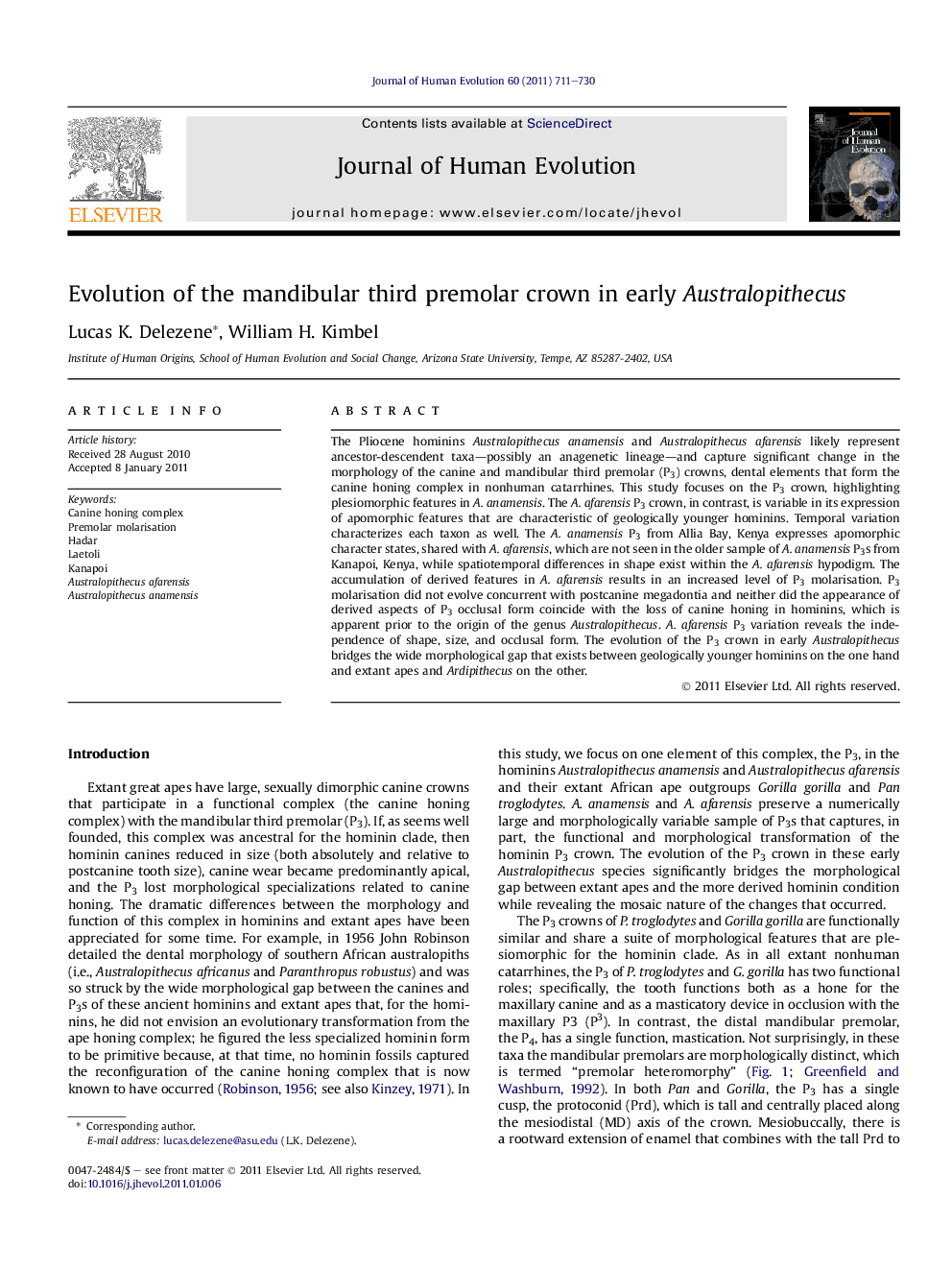| Article ID | Journal | Published Year | Pages | File Type |
|---|---|---|---|---|
| 4556550 | Journal of Human Evolution | 2011 | 20 Pages |
The Pliocene hominins Australopithecus anamensis and Australopithecus afarensis likely represent ancestor-descendent taxa—possibly an anagenetic lineage—and capture significant change in the morphology of the canine and mandibular third premolar (P3) crowns, dental elements that form the canine honing complex in nonhuman catarrhines. This study focuses on the P3 crown, highlighting plesiomorphic features in A. anamensis. The A. afarensis P3 crown, in contrast, is variable in its expression of apomorphic features that are characteristic of geologically younger hominins. Temporal variation characterizes each taxon as well. The A. anamensis P3 from Allia Bay, Kenya expresses apomorphic character states, shared with A. afarensis, which are not seen in the older sample of A. anamensis P3s from Kanapoi, Kenya, while spatiotemporal differences in shape exist within the A. afarensis hypodigm. The accumulation of derived features in A. afarensis results in an increased level of P3 molarisation. P3 molarisation did not evolve concurrent with postcanine megadontia and neither did the appearance of derived aspects of P3 occlusal form coincide with the loss of canine honing in hominins, which is apparent prior to the origin of the genus Australopithecus. A. afarensis P3 variation reveals the independence of shape, size, and occlusal form. The evolution of the P3 crown in early Australopithecus bridges the wide morphological gap that exists between geologically younger hominins on the one hand and extant apes and Ardipithecus on the other.
